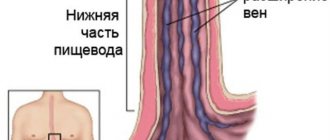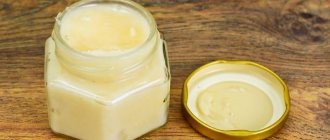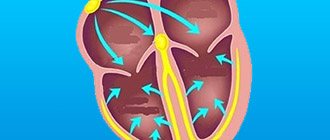One of the first places in the world is occupied by mortality from cardiovascular diseases. Vascular diseases, blockage of arteries and veins negatively affects the functioning of all organs of the body.
Arteries are blood vessels that carry oxygenated blood throughout the body. With the bloodstream, the necessary vitamins, hormones, and nutrients are carried to every part of the human body. Healthy blood vessels have smooth inner walls, and blood flows smoothly through them.
What is vascular blockage?
Blockage of blood vessels occurs due to various factors:
- thrombosis;
- injuries;
- the appearance of atherosclerotic plaques on the walls.
A thrombus is a blood clot that forms as a result of damage to the inner wall of an artery. The plaque is formed from substances circulating in the blood: calcium, cholesterol, fibrin. The body evaluates this formation as a defect and the process of thrombus formation begins. Unlike arterial thrombosis, venous thrombosis is not characterized by cholesterol deposition.
As deposits build up in the arteries, a condition called atherosclerosis occurs. This condition leads to narrowing and hardening of blood vessels.
Risk factors contributing to vascular blockage:
- increased cholesterol levels;
- high blood pressure;
- diabetes;
- smoking;
- obesity;
- sedentary lifestyle;
- genetic predisposition.
Symptoms of vascular blockage
Often, poor arterial patency does not cause any pain until a serious complication such as a stroke develops.
In other cases, especially when more than half of the artery is blocked, symptoms such as:
- discomfort, chest pain;
- severe shortness of breath;
- rapid heartbeat;
- dizziness;
- nausea;
- weakness;
- sweating
Due to a decrease in blood flow to the heart, chest pain (angina) appears, then coronary heart disease develops.
Peripheral artery blockage can cause:
- Leg pain.
- Poor healing of foot injuries.
- Gangrene.
If there is obstruction of the cerebral vessels, a person experiences headaches, constant or periodic, increased blood pressure, dizziness, vomiting, and unclear consciousness.
Consequences of the disease
Depending on the location of the damaged vessel, various complications arise. With obstruction in the extremities, nagging pain in the legs first appears, then trophic ulcers and tissue necrosis. Amputation is indicated, otherwise gangrene may develop. With prolonged ischemia of the heart vessels, myocardial infarction occurs. Long-term obstruction of blood vessels in the brain causes a stroke.
Hormones, fat and genes
Yulia Borta, AiF: Konstantin Borisovich, what are atherosclerotic plaques in blood vessels? And why do they suddenly appear?
Konstantin Frolov : Atherosclerotic plaques are deposits of lipids, that is, fats. There are many theories about the development of atherosclerosis, but why this begins to happen is not completely clear. It has been established that heredity plays a major role in the development of the disease. As a rule, in patients who suffer from atherosclerosis, relatives were ill or died from its complications: stroke, heart attack, etc. No one disputes an excess of animal fats in food as the main provoking factor in the development of atherosclerotic plaques. The negative effects of smoking have also been proven. Among our patients, more than 90% are experienced smokers.
Article on the topic
Don't be afraid of fat. How to eat to get rid of atherosclerosis? However, following a healthy diet does not provide a 100% guarantee that the disease will not appear. There are interesting studies that have shown that through various hormonal manipulations it is possible to induce the development of significant atherosclerosis in herbivores that have not eaten a single gram of animal fat in their lives. So there are many theories on this topic, but none of them gives a comprehensive answer to the question about the causes of atherosclerosis. Therefore, we can fight, alas, only with its consequences.
— With excess fat it’s understandable. How does calcium appear in plaques?
— With pathological changes in the vessel wall, when its nutrition is disrupted, first fibrosis occurs, the formation of connective tissue, and then calcification, that is, the deposition of calcium in this area. This is the final stage of plaque development, when it becomes hard and stable. Before this, the plaque has a softer structure; parts of it can come off, “fly away” with the bloodstream and clog smaller blood vessels.
Diagnostics
If poor patency of arteries and veins is suspected, the following studies are performed:
- Cholesterol analysis.
- Chest X-ray.
- CT scan.
- Ultrasound.
- Echocardiogram.
- ECG.
- MRI scan.
- Angiogram.
Magnetic resonance imaging (MRI) uses magnets and radio waves to produce images inside the body without a surgical incision. Unlike CT scans, MRIs do not use ionizing radiation. This is considered a safer alternative.
Prevention of atherosclerosis
Prevention of atherosclerosis includes the following actions:
- quitting smoking, eating restrictions, weight regulation, increasing physical activity;
- exclude foods containing large amounts of cholesterol from the diet;
- eat cereal foods: eggplants, carrots, leeks, garlic, yoghurts.
Experts recommend consuming large quantities of fruits, berries, and plants of red and yellow hues (rowan berries, strawberries, hawthorn). Regulating a patient’s body weight with atherosclerosis is a mandatory measure. After all, obesity causes serious vascular complications. Low-calorie diets are prescribed for weight loss. It is recommended to increase physical activity taking into account age and health status. The safest and most accessible form of physical activity is walking.
Atherosclerosis of heart vessels treatment
In most cases, drug treatment is sufficient to eliminate atherosclerosis. Treatment with special drugs is combined with a diet and special physical exercises. Among the prescribed medications, the following popular groups are distinguished: statins, LC sequestrants, as well as fibrates and nicotine preparations. To prescribe effective therapy, specialists refer patients to undergo cardiac MRI in Moscow.
Make an appointment Make an appointment and get a professional examination at our center
Treatment of vascular blockages
There are many options for preventing and treating blood clots. Depending on the severity of the condition and the patient's medical history, the doctor prescribes various methods.
Disease prevention:
Quitting bad habits, urgent lifestyle changes:
- a diet low in saturated fat and cholesterol, less sugar and simple carbohydrates, and high in fruits and vegetables;
- body weight loss;
- ban on smoking and alcohol;
- fitness classes;
- minimizing stress;
- lowering blood pressure and cholesterol using folk remedies;
- maintaining low blood sugar levels by avoiding large amounts of sweets, jam, and sweets.
Drug treatment
Some medications help prevent clogged arteries, such as:
- cholesterol-lowering medications;
- drugs that lower blood pressure;
- blood thinners, which reduce the chance of dangerous blood clots.
Surgical intervention.
In the later stages of the disease, drug measures do not help improve the situation and then surgical procedures are used:
Stenting
A small tube called a stent is placed in the artery to maintain good blood flow. A catheter is inserted through an artery in the leg to reach the heart, and a stent is inserted through the catheter into the area of the blockage.
Coronary artery bypass grafting
In this surgery, arteries from other parts of the body are moved to the site of blocked arteries to help the blood reach its target destination.
Balloon angioplasty
A device is used that pushes the plaque towards the side walls of the arteries, resulting in the opening of the vessel lumen.
But in advanced cases, especially when the vessels of the legs are damaged, it is not possible to save the limbs, amputation is indicated.
"They won't go away"
— Is the process of atherosclerosis already begun irreversible?
“Unfortunately, the atherosclerotic plaques that have already formed will not “resolve.” And conversations about miracle drugs, IVs that dissolve plaques, have nothing to do with reality. We can only slow down the process of plaque increase in size and prevent complications of atherosclerosis that are dangerous to health and life.
Article on the topic
We ran away from a heart attack and caught up with him. How sports can lead to atherosclerosis
“Nevertheless, the Internet is full of advice on how to clean vessels.
— This formulation is incorrect and is used to promote artisanal treatment methods. There is no cleaning, only surgical techniques.
— For atherosclerosis, statins are usually prescribed. However, information has emerged that they can lead to the development of cancer.
— The effectiveness of statins in the treatment of atherosclerosis has been absolutely proven by multicenter studies. Their use can reduce the number of dangerous complications in patients suffering from atherosclerosis and lipid metabolism disorders, and slow down the further development of atherosclerotic plaques.
Yes, statins have side effects. The most well-known is liver dysfunction. Therefore, these drugs are used under laboratory monitoring of liver function. In case of obvious changes, the dosage is reduced or statins are discontinued.
Article on the topic
Statins and discipline. Reducing blood pressure in Russian
— Tell us about surgical methods for treating atherosclerosis.
— Today, three main methods are used.
Open vascular surgery:
— The artery is opened, the plaque is removed, and the lumen of the vessel is sutured (so-called endarterectomy).
— Bypass surgery. In case of longer vessel blockage (10-15 cm or more), shunts are used. A backup artificial vessel made of synthetic materials or autovenous is sewn to the artery to ensure blood flow bypassing the area of narrowing or blockage.
Endovascular (intravascular) techniques are considered the most progressive today and are increasingly used in the world. In this case, the blockage or narrowing of the vessel is eliminated without cutting the skin, through a puncture in the artery. For example, we can make a puncture in the leg or arm and pass instruments through the lumen of the vessel into the femoral, carotid, and coronary arteries. The access zone and the operation zone are often tens of centimeters apart. In the place of the blocked plaque, we restore the lumen, insert a balloon, push apart the walls of the vessel and install a frame (stent) that will support the created lumen.
— Do such operations cure forever?
“Unfortunately, eliminating the narrowing and restoring blood flow in one place does not stop the development of the process in other vessels. Especially if a person does not change his lifestyle: he continues to eat poorly, moves little, smokes. There are patients whom I operated on the arteries of the legs, brain, and aorta. Although all patients are given recommendations upon discharge after vascular surgery, on nutrition, observation by a cardiologist and surgeon, and ultrasound monitoring of the condition of blood vessels, few follow them. Most, when they are no longer bothered by previous complaints, return to their usual way of life. And then they come with a new problem.
Article on the topic
Neither sigh nor groan. Atherosclerosis of blood vessels threatens to turn into a heart attack
Atherosclerosis of the arteries of the lower extremities
In the lower extremities, plaques most often form in places where large vessels branch. The superficial femoral and popliteal arteries are usually affected.
This type of disease has several obvious manifestations:
- lameness that appears when you start walking and disappears when you stop;
- pain in the calf muscles, thigh, hip joint;
- at the site of joint damage, the shade of the skin changes (cyanosis);
- there is chilliness in the legs, numbness, cramps at night;
- legs get tired quickly when walking even short distances.
Failure to see a doctor in a timely manner can lead to complete blockage of one of the vessels, which is fraught with complications. The most serious is the development of ischemic gangrene (death of tissue near the affected vessel) - in this case, even amputation of the limb may be necessary.
A common complication is also thrombosis of the arteries of the lower extremities, which leads to embolism: part of the blood clot breaks off and blocks one of the large vessels. It is impossible to predict exactly where the blood clot will go and which vessel it will block.
How does the disease appear?
In general, cholesterol (a type of fat) is important for the body, as it participates in the construction of vascular walls and is part of hormones and vitamins. In normal metabolism, cholesterol circulates between the liver and tissues; in excess, it is utilized in the liver. If the circulation is impaired, it accumulates in the form of plaques (together with fibrin and other substances) on the walls of blood vessels. The lumen of the vessel narrows, and the blood pressure on the walls automatically increases. Unfortunately, the process is almost inevitable and is observed in 85% of cases in patients over 50 years of age.
The following phenomena gradually develop:
- the walls of the vessel are subject to ulceration;
- scar tissue grows;
- deposits of lime salts are observed on the vascular walls.
The vessel at the site of plaque formation becomes calcified, and this leads to its destruction.
Variable factors
The development of all types of disease is influenced by our lifestyle. In order to reduce risks as much as possible, you should:
- move more and exercise;
- do not abuse fatty foods;
- try not to expose yourself to stress;
- give up alcohol and smoking.
Potentially correctable causes include:
- diabetes mellitus (glucose levels must be monitored);
- arterial hypertension (pressure);
- hypercholesterolemia (cholesterol levels);
- obesity (waist more than 102 cm in men and more than 88 cm in women);
- frequent infections and intoxications.









